Some of the endangered species in Florida are famous and beloved – sea turtles, panthers and Key deer, for example. Some are obscure and perhaps hard to appreciate – nobody is making signs saying “save the oval pigtoe mollusk.”
Of the 50 Florida endangered species, you’ve probably heard of a dozen or two. (See below to test yourself on the full list.)
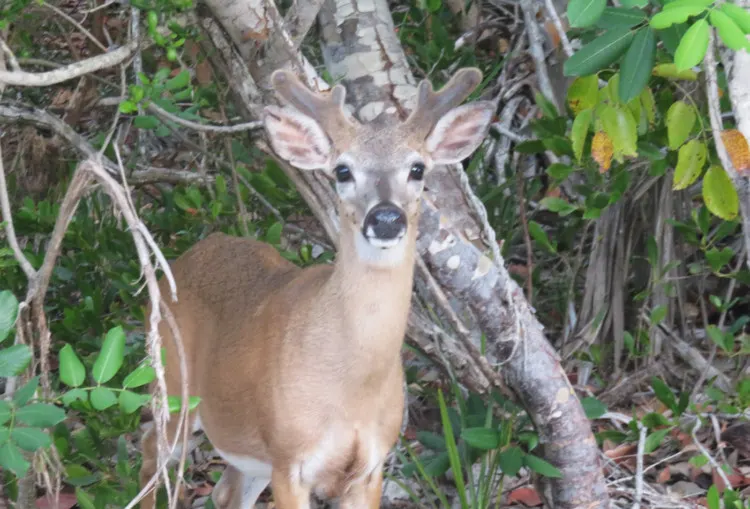
Famous or not, they are all important in maintaining biodiversity in the complex web of life on Earth.
Every year, the third Friday in May is Endangered Species Day. This year is also the 50th anniversary of the landmark Endangered Species Act, which went into effect in 19723.
It’s just a coincidence that there are exactly 50 animals in Florida listed as endangered species by the US Fish and Wildlife Service on the 50th anniversary.
The list changes over the years – animals are added as their numbers dwindle, some are removed from the list as the species rebound and, sadly, some are removed from the list because they become extinct.
The dusky seaside sparrow, for example, used to live in the marshes of Merritt Island, but the last one, a half-blind sparrow named Orange Band, died in 1987. The dusky seaside sparrow is no longer listed as endangered; it’s extinct.
There are some notable success stories, however, in saving endangered species in Florida, and these are animals you can easily see as your travels in Florida.
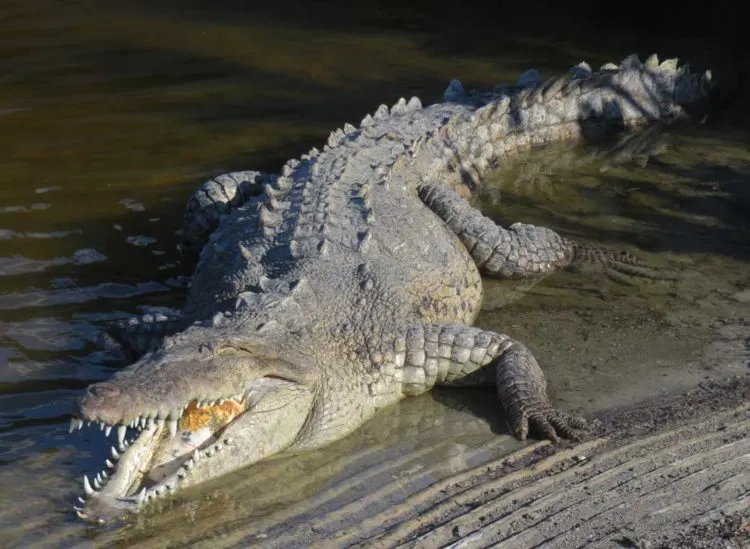
The American crocodile
The croc was listed as an endangered species in 1975 when there were only a few hundred left. Today, more then 2,000 adult crocodiles live in shallow brackish or salt water along both South Florida coasts. They can be found as far north as Tampa Bay on the Gulf Coast and Brevard County on the Atlantic Coast. Crocodiles have moved off the list of endangered species and as of 2007 are listed as threatened.
Where can you see crocodiles? Crocs are frequently spotted in Everglades National Park, both in the Flamingo marina and on the kayak trail on Nine Miles Pond.
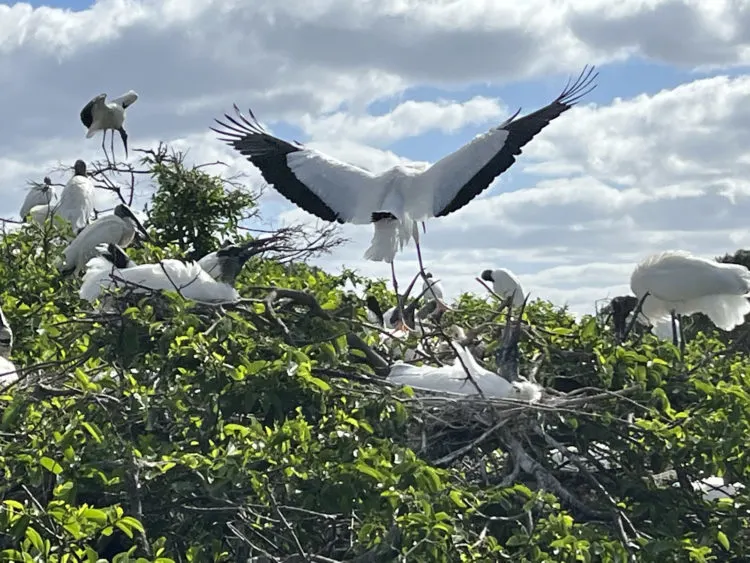
The wood stork
The wood stork was having a tough time in 1984, when it was listed under the Endangered Species Act. The population was down to less than 5,000 nesting pairs, primarily in the Everglades and Big Cypress ecosystems, and wildlife researchers feared it was heading for extinction because of habitat loss.
Today, the wood stork breeding population has doubled to more than 10,000 nesting pairs and it has increased its range beyond Florida. Where spotting a wood stork 40 years ago was rare, today they are common sights in South Florida. The wood stork was downlisted to a threatened species in 2014.
Where can I see wood storks? Many South Florida marshes and bays are homes to wood storks, but my favorite spot is seeing dozens of nesting wood storks and their chicks, with some only five or 10 feet away, every spring on the boardwalk at Wakodahatchee Wetlands in Delray Beach.
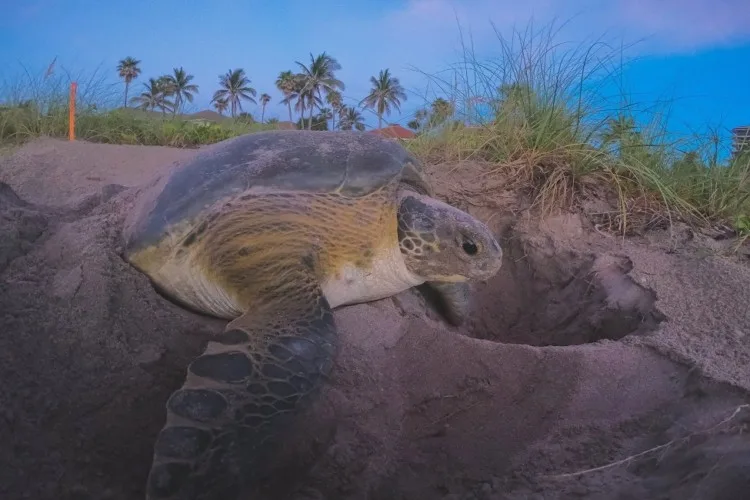
Green sea turtles
The green sea turtle is a success story. In 1984, only 32 green sea turtle nests were counted in what is now the Archie Carr National Wildlife Refuge on the east central Florida coast. In recent years, there have been 15,000 to 20,000 green turtle nests a year on that 20 miles of beach! That makes green turtles one of the greatest conservation success stories of our time.
How was it accomplished? Among other things, harvesting of eggs, turtle fishing and the sale of sea turtle meat were all banned. In 1989, shrimp fishermen were required to have nets that allowed sea turtles to escape rather than to drown as bycatch.
Where can I see sea turtles? Every summer, thousands of sea turtles come ashore at night to dig holes in the sand and lay eggs. Licensed non-profit organizations provide night-time walks on the beach to witness a sea turtle nesting. Here’s a Florida Rambler story on how to go on a sea-turtle-nesting beach walk.
What animals are listed as endangered species in Florida?
Federally-designated endangered species, as of December 2022, include three species of fish, one amphibian, three reptiles, eight birds, 22 mammals and 13 invertebrates for a total of 50.
Florida endangered species: Fish
- Atlantic sturgeon
- Shortnose sturgeon
- Smalltooth sawfish
Florida endangered species: Amphibians
- Reticulated flatwoods salamander
Florida endangered species: Reptiles
- Hawksbill sea turtle
- Kemp’s ridley sea turtle
- Leatherback sea turtle
Florida endangered species: Birds
- Bachman’s wood warbler
- Cape Sable seaside sparrow
- Eskimo curlew
- Everglade snail kite
- Florida grasshopper sparrow
- Ivory-billed woodpecker
- Kirtland’s warbler (Kirtland’s wood warbler)
- Red-cockaded woodpecker
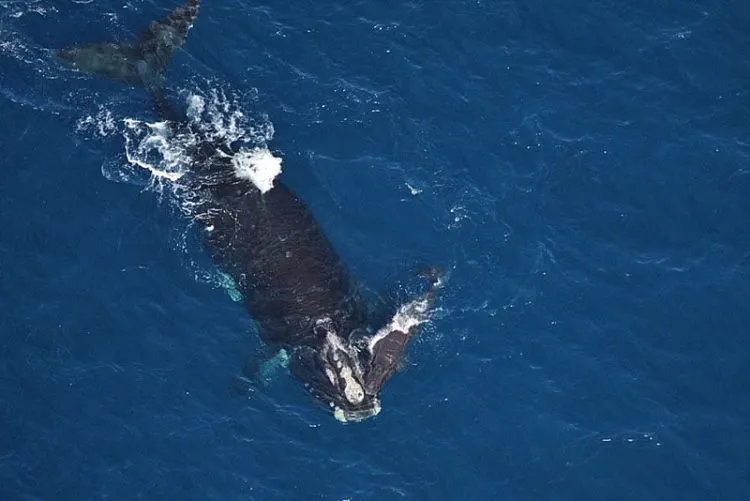
Florida endangered species: Mammals
- Anastasia Island beach mouse
- Choctawhatchee beach mouse
- Finback whale
- Florida bonneted bat
- Florida panther
- Florida salt marsh vole
- Gray bat
- Gray wolf (species not documented in Florida)
- Bryde’s Whale (Gulf of Mexico subspecies)
- Humpback whale
- Indiana bat
- Key deer
- Key Largo cotton mouse
- Key Largo woodrat
- Lower Keys rabbit
- North Atlantic right whale
- Perdido Key beach mouse
- Red wolf
- Rice rat
- Sei whale
- Sperm whale
- St. Andrew beach mouse
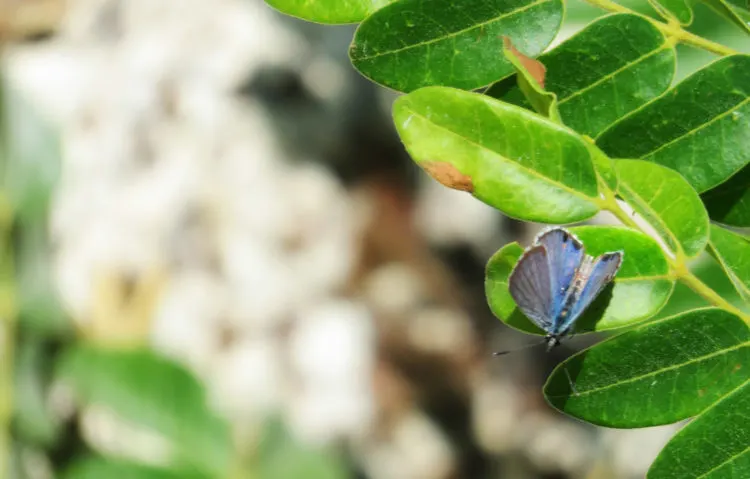
Florida endangered species: Insects
- Bartram’s scrub-hairstreak
- Florida leafwing
- Miami blue butterfly
- Miami tiger beetle
- Schaus swallowtail butterfly
Florida endangered species: Mollusks
- Choctaw bean
- Fat threeridge (mussel)
- Gulf moccasinshell (mussel)
- Ochlockonee moccasinshell (mussel)
- Oval pigtoe (mussel)
- Round ebonyshell
- Shinyrayed pocketbook (mussel)
- Southern kidneyshell
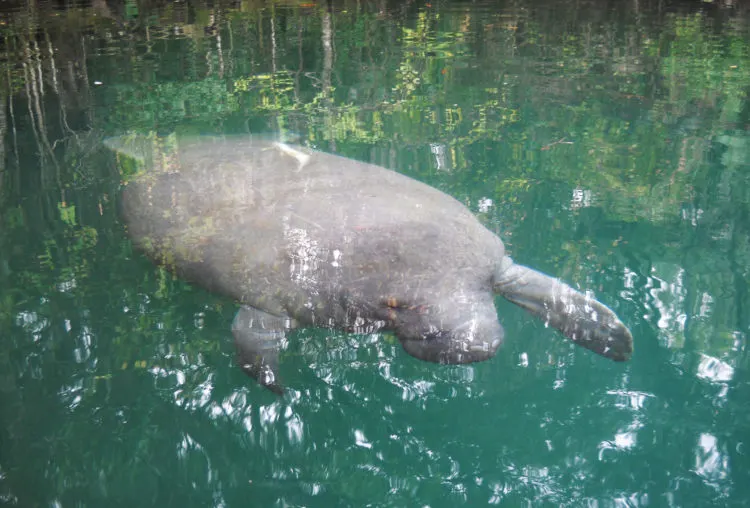
Manatees are listed as threatened, not endangered
If you were looking for manatees on that list, I didn’t forget them. They’re not listed as endangered; they’re considered “threatened.”
The number of manatees increased enough that they were “down listed” in 2017. In recent years, some environmentalists have grown concerned because manatees are up against so many environmental factors: red tide, the loss of sea grass in the Indian River Lagoon, waterfront habitat loss and increasing boat traffic.
Five ways to help endangered species
U.S. Fish and Wildlife Service suggests these five ways to celebrate Endangered Species Day.
- Plant a pollinator garden with native plants.
- Volunteer your time on public lands or with local nature organizations.
- Make your home a haven for wildlife.
- Stop the spread of invasive species.
- Help educate others about endangered species.
More from Florida Rambler about endangered and threatened species in Florida
- How to see Key deer in the Florida Keys.
- Where to see manatees in Florida
- Right whale watching in Florida
- 12 Keys animals not to miss and when to see them
- 8 great national wildlife refuges in Florida

The author, Bonnie Gross, travels with her husband David Blasco, discovering off-the-beaten path places to hike, kayak, bike, swim and explore. Florida Rambler was founded in 2010 by Bonnie and fellow journalist Bob Rountree, two long-time Florida residents who have spent decades exploring the Florida outdoors. Their articles have been published in the Sun Sentinel, the Miami Herald, the Orlando Sentinel, The Guardian and Visit Florida.

Jason
Friday 15th of September 2023
How would I go about reporting a sighting of a red wolf in Ocala Fl? Or is there no point? Obviously I’m no expert, could have been a massive coyote maybe?? but considering they are all but extinct it might be worth confirming. It was at a stop light so I’m wondering if there could be captured footage or a photo. Anyway, my mind was blown.
Bonnie Gross
Saturday 16th of September 2023
Jason, That sounds thrilling! I think you should contact the ranger station at Ocala National Forest. Here's info:
Lake George Ranger District 17147 E. State Road 40 Silver Springs, FL 34488 Call us at: 352-625-2520 Hours: Monday - Friday, 7:30 a.m. - 4 p.m. (closed weekends and Federal holidays)
I have no idea how they'll receive the information, but I know every park ranger I have ever met cares about wildlife and is extremely knowledgable.
-- Bonnie
jennifer
Wednesday 17th of May 2023
Would have been great had you mentioned the Gopher Tortoise as they are threatened throughout Florida and even endangered and federally protected in the western panhandle. They are remarkable animals and are unjustly being overlooked. Given the growth in Florida, I believe they will become extinct in the near future.The area that I live in is on the east coast
Bob Vandivort
Sunday 14th of May 2023
Hi Bonnie Those endangered Animals are now Humans an Wildlife Hugs Bob V
Jodie Satterfield
Sunday 14th of May 2023
Thank you for taking the time to write about Florida’s endangered and threatened species. It would have been great had you mentioned the Gopher Tortoise as they are threatened throughout Florida and even endangered and federally protected in the western panhandle. They are remarkable animals and are unjustly being overlooked. Given the growth in Florida, I believe they will become extinct in the near future.The area that I live in on the east coast, near New Smyrna Beach, has soared in human population and their habitat is being destroyed daily. There is supposedly a relocation program when someone builds but it is rarely used, and never enforced.(The land owner/ builder has to PAY several thousand dollars per tortoise to have them moved, so they opt to pay a smaller fine instead) It doesn’t make sense. I am personally passionate about their demise, because I see them dead in the middle of the road. When you actually stand there and look down at a large, 40-50 year old tortoise smashed from car tires, it is heartbreaking. They deserve our protection. Things must change. Thank you for your time and dedication.
Bonnie Gross
Sunday 14th of May 2023
Thanks, Jodie. I love seeing gopher tortoises when I am hiking or exploring Florida. What beautiful gentle creatures. In 2022, the US Fish and Wildlife Service ruled that gopher tortoises were not at risk of extinction and declined to list them as threatened or endangered. Lots of people disagree. Because of that ruling, I did not include them in this article. But I thank you for your comments, which will bring them a little attention.